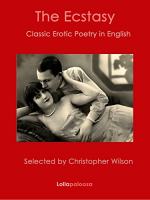|
This section contains 320 words (approx. 1 page at 400 words per page) |

|
The Ecstasy Summary & Study Guide Description
The Ecstasy Summary & Study Guide includes comprehensive information and analysis to help you understand the book. This study guide contains the following sections:
This detailed literature summary also contains Quotes and a Free Quiz on The Ecstasy by John Donne.
The version of this poem used to create this study guide appears in: Donne, John. “The Ecstasy.” https://www.poetryfoundation.org/poems/44099/the-ecstasy.
Note that parenthetical citations within the guide refer to the lines of the poem from which the quotations are taken.
“The Ecstasy” is a 76-line iambic tetrameter poem written by the Renaissance-era English metaphysical poet and cleric John Donne. Because much of Donne’s verse went unpublished during his lifetime, dating the poem’s composition is difficult. But the 20-year interval in which it likely appeared, 1590-1610, corresponds to the late Renaissance. This period of artistic and literary revival based around classical themes flourished in Queen Elizabeth I’s England, where Donne lived and wrote. That some critics see “The Ecstasy” as a challenge to Neoplatonic ideas about love while others consider it a sly depiction of seduction speaks to the poem’s ambiguous but far-reaching nature. In portraying an ecstatic experience, Donne uses the lens of love to examine the age-old question of soul versus body. Ultimately he imparts a message about the importance of both the carnal and the spiritual in reaching a true understanding of love.
The poem opens upon a pastoral scene of two lovers grasping each other’s hands and gazing into each other’s eyes. From this state of repose, the lovers’ souls are able to stand and meet outside of their bodies, so bringing them to a greater comprehension of love. Love mixes and unifies their souls into a single, more superior soul. After celebrating the process by which their souls fuse into one, the lovers then consider the role of their bodies, in the end acknowledging the flesh to be of equal significance in experiencing the full mysteries of love. The poem ends with the lovers’ souls returning to their bodies and the observation that their love endures even when translated from heaven to earth.
Read more from the Study Guide
|
This section contains 320 words (approx. 1 page at 400 words per page) |

|



